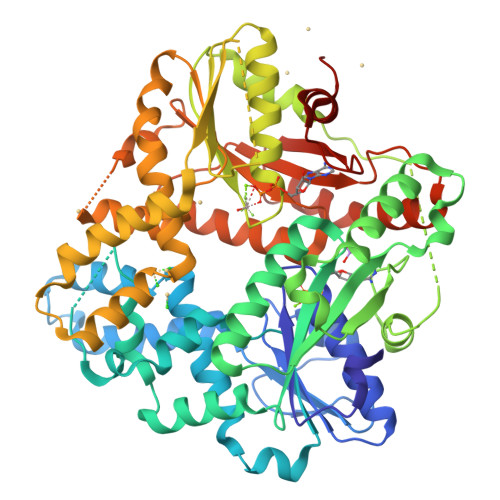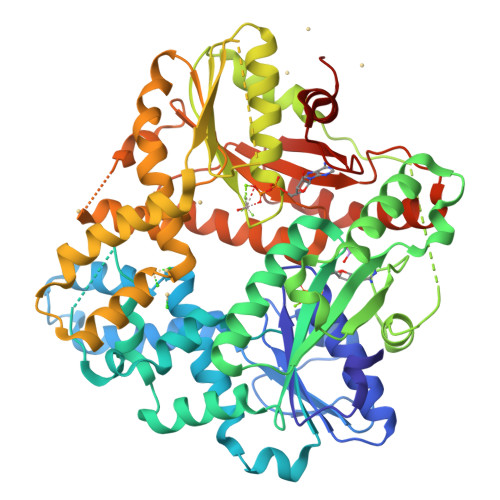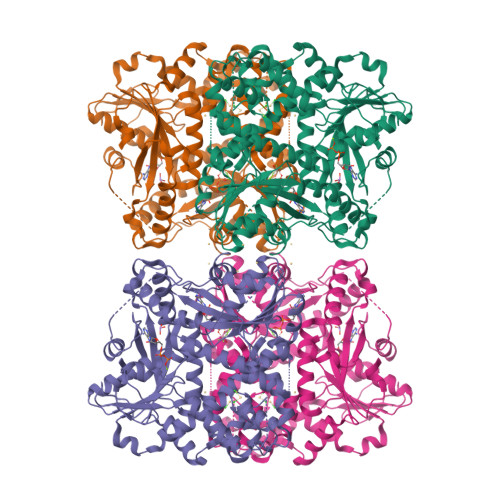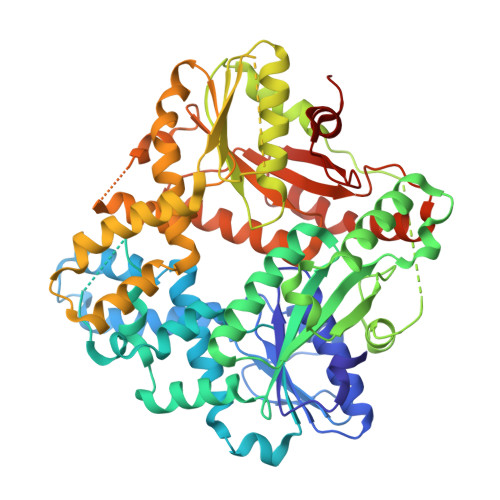Conformational changes in four regions of the Escherichia coli ArsA ATPase link ATP hydrolysis to ion translocation.
Zhou, T., Radaev, S., Rosen, B.P., Gatti, D.L.(2001) J Biological Chem 276: 30414-30422
- PubMed: 11395509
- DOI: https://doi.org/10.1074/jbc.M103671200
- Primary Citation of Related Structures:
1IHU, 1II0, 1II9 - PubMed Abstract:
Structures of ArsA with ATP, AMP-PNP, or ADP.AlF(3) bound at the A2 nucleotide binding site were determined. Binding of different nucleotides modifies the coordination sphere of Mg(2+). In particular, the changes elicited by ADP.AlF(3) provide insights into the mechanism of ATP hydrolysis. In-line attack by water onto the gamma-phosphate of ATP would be followed first by formation of a trigonal intermediate and then by breaking of the scissile bond between the beta- and gamma-phosphates. Motions of amino acid side chains at the A2 nucleotide binding site during ATP binding and hydrolysis propagate at a distance, producing conformational changes in four different regions of the protein corresponding to helices H4-H5, helices H9-H10, helices H13-H15, and to the S1-H2-S2 region. These elements are extensions of, respectively, the Switch I and Switch II regions, the A-loop (a small loop near the nucleotide adenine moiety), and the P-loop. Based on the observed conformational changes, it is proposed that ArsA functions as a reciprocating engine that hydrolyzes 2 mol of ATP per each cycle of ion translocation across the membrane.
Organizational Affiliation:
Department of Biochemistry and Molecular Biology, Wayne State University School of Medicine, Michigan 48201, USA.

























